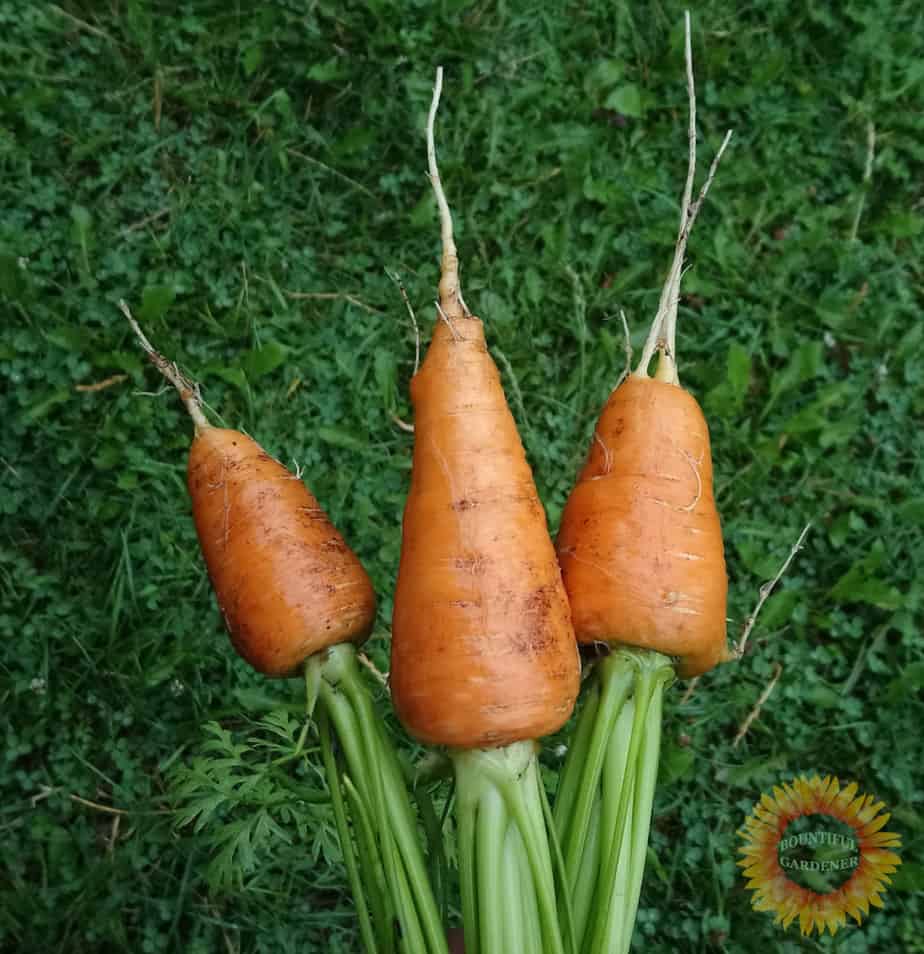Carrots are often one of the first root vegetables people grow at home, but they have a reputation for being fussy growers, with most complaints stemming from harvesting small or deformed carrots. The carrot taproot (the part we eat) requires loose and stone-free soil to grow properly. This has led many gardeners to question whether they can even grow carrots if they don’t have loose, sandy soil.
You can grow carrots in any kind of soil, and while sandy soil is often preferred for carrot growing, it’s not without its disadvantages, which are explained below.
On this page:
Do Carrots Need Sandy Soil?
While carrots grow best in sandy loam soil, carrot plants do not need sandy soil to grow or produce large, healthy carrots.
Carrots will thrive in a variety of soil conditions, but the heavier the soil or the more stones and twigs in it, the more likely you’ll end up with deformed, forked, or tiny carrots. However, even if you have heavy clay soil, you can grow carrots, but you may see more success with shorter, stockier type of carrots like chantenay varieties or small globe carrots. You can also amend heavy soils to make them better for growing carrots.
Do Carrots Grow Better in Sand?
Sandy soils are usually preferred for growing carrots commercially since the loose soil allows carrot taproots (the actual carrots) to grow straight down and grow thicker without any pressure or resistance limiting their growth.
While carrots grow better in sand, there are two disadvantages to growing carrots (or any vegetables) in sandy soil: less water and nutrient retention. Sand is just finely ground up rocks, so it has very limited water-holding capacity and dries out much more quickly. The more sandy your soil, the bigger the problem this becomes. Similarly, sand itself lacks a lot of key nutrients like nitrogen, and when you add fertilizer, it will easily wash away the next time it rains. As a result, growing carrots in very sandy soil will require more frequent watering and fertilizing.

Should I Add Sand to My Soil for Carrots?
If you have heavy, clay soil, you do not need to add sand to it. In some cases, especially with fine sand, which has minimal effect on improving clay soil for carrots. If you use rougher sand which is more effective at improving drainage, it may be too stony to grow well-formed carrots, causing more forking in the taproots.
Adding Organic Matter to Heavy Clay Soil for Better Carrots
Fortunately, there is a much easier and better way to improve heavy soils for growing carrots: adding more organic matter. While carrots are usually grown commercially in sandy soils, there is another type of soil which is also used for carrot cultivation: muck soil.
Muck soil is what’s left over in drained marshes and swamplands. This black, rich soil is ideal for farming all kinds of vegetables, but it’s especially good for carrots because it consists of extremely decomposed plant matter, to the point that you cannot even identify plant parts when examining it closely.
While you can’t easily buy muck soil, you can simulate it by adding organic matter. For the best results, take regular compost and sift out the twigs and other large bits of plant matter, and then add that to your carrot beds. You can also use aged manure (avoid fresh manure).
Carrot Varieties for Heavy or Clay Soil
Carrot varieties ideal for containers also work well in heavy, clay soil. These varieties are generally short and wide carrots, requiring less energy to push down into hard soils.
Globe and chantenay-type carrots do exceptionally well in heavy soil, such as the cute Parisian carrot and the meaty Red Cored Chantenay.
Can You Grow Carrots in Peat and Coco Coir?
Carrots can grow in peat or coco coir as long as it’s been amended with low-nitrogen fertilizer.
Because peat and coco coir are already quite light and fluffy, and are great at retaining moisture, you can see a lot of success with garden beds amended with peat/coir or even containers filled with coir-based or peat-based potting mix.
Just make sure to add more fertilizer, particularly fertilizer lower in nitrogen (the first NPK number on fertilizer labels). Nitrogen is great for leafy green growth, but if you want to ensure better root development, use one with higher phosphorus and potassium (the P and K numbers).
What Are the Worst Soils for Carrots?
The worst soils for carrots are heavy clay soils with lots of stones or other debris.
No matter what kind of soil you have, whether it’s mostly sand or clay, stones and other larger pieces of hard debris will cause your carrots to fork, twist, and turn. These carrots are still edible, but won’t reach their size potential due to all the obstacles in root growth. If you’ve ever harvested carrots that were mostly hairy roots and a skinny taproot, it was either because it was transplanted (it’s almost always best to sow carrots directly from seed) or because the taproot encountered lots of stones and pebbles, causing it to fork into multiple smaller roots.
